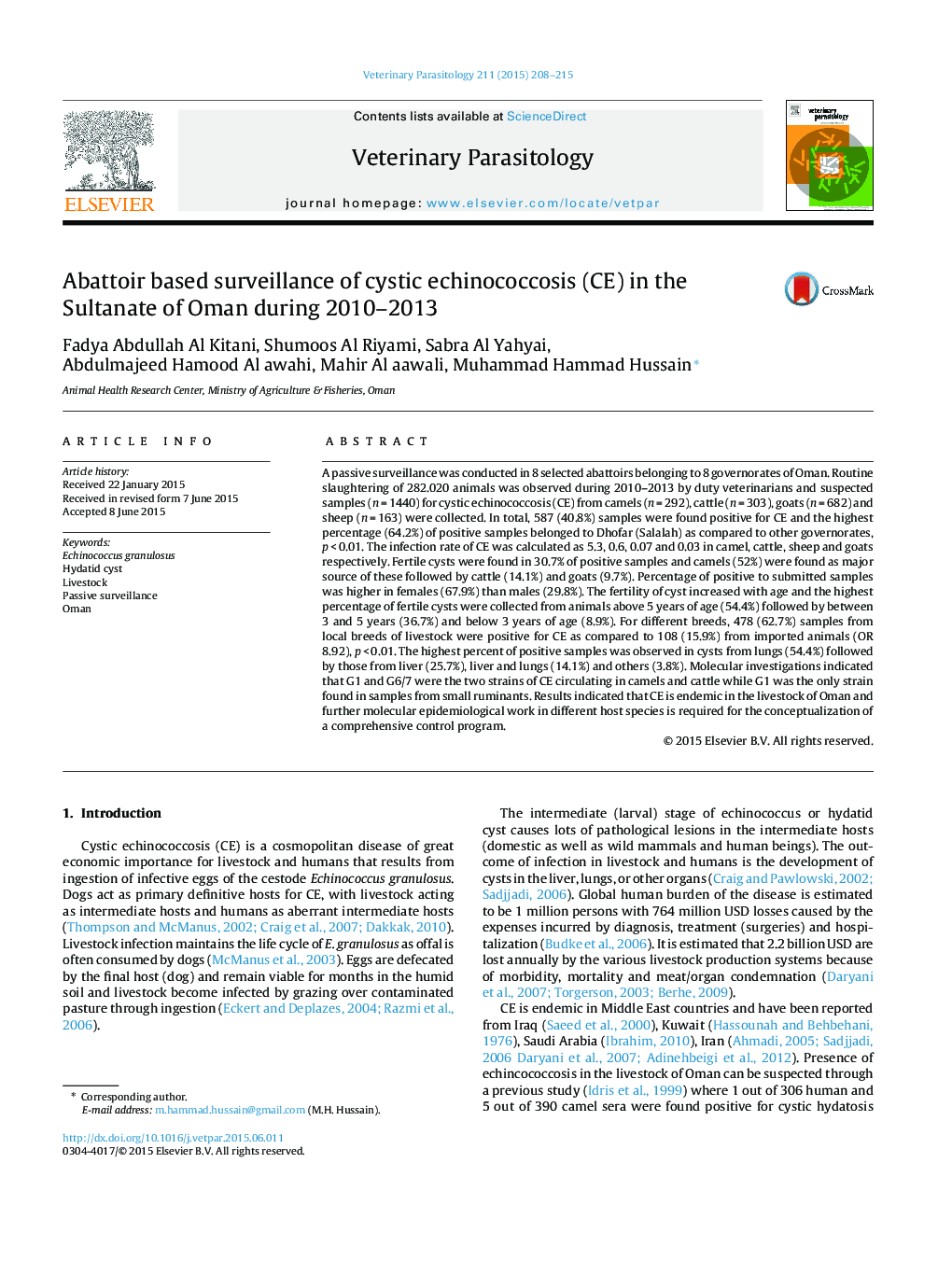| کد مقاله | کد نشریه | سال انتشار | مقاله انگلیسی | نسخه تمام متن |
|---|---|---|---|---|
| 5802417 | 1555668 | 2015 | 8 صفحه PDF | دانلود رایگان |

- G1 and G6/7 strains of E. granulosus were detected in livestock slaughtered at 8 abattoirs in Oman.
- The prevalence (5.3%) and fertility of cyst (52%) was found highest in camels.
- Odds for being HC positive were higher in females (4.97) and local breeds (8.92).
- Chances of development of cyst were higher in animals > 5 years of age (OR 25.3).
- Highest% of positive sample were from lungs (56.4%) followed by liver (25.7%).
A passive surveillance was conducted in 8 selected abattoirs belonging to 8 governorates of Oman. Routine slaughtering of 282.020 animals was observed during 2010-2013 by duty veterinarians and suspected samples (n = 1440) for cystic echinococcosis (CE) from camels (n = 292), cattle (n = 303), goats (n = 682) and sheep (n = 163) were collected. In total, 587 (40.8%) samples were found positive for CE and the highest percentage (64.2%) of positive samples belonged to Dhofar (Salalah) as compared to other governorates, p < 0.01. The infection rate of CE was calculated as 5.3, 0.6, 0.07 and 0.03 in camel, cattle, sheep and goats respectively. Fertile cysts were found in 30.7% of positive samples and camels (52%) were found as major source of these followed by cattle (14.1%) and goats (9.7%). Percentage of positive to submitted samples was higher in females (67.9%) than males (29.8%). The fertility of cyst increased with age and the highest percentage of fertile cysts were collected from animals above 5 years of age (54.4%) followed by between 3 and 5 years (36.7%) and below 3 years of age (8.9%). For different breeds, 478 (62.7%) samples from local breeds of livestock were positive for CE as compared to 108 (15.9%) from imported animals (OR 8.92), p < 0.01. The highest percent of positive samples was observed in cysts from lungs (54.4%) followed by those from liver (25.7%), liver and lungs (14.1%) and others (3.8%). Molecular investigations indicated that G1 and G6/7 were the two strains of CE circulating in camels and cattle while G1 was the only strain found in samples from small ruminants. Results indicated that CE is endemic in the livestock of Oman and further molecular epidemiological work in different host species is required for the conceptualization of a comprehensive control program.
Journal: Veterinary Parasitology - Volume 211, Issues 3â4, 30 July 2015, Pages 208-215